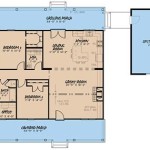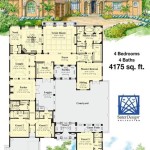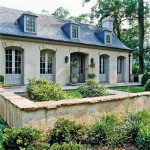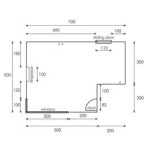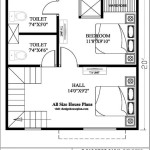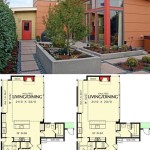The Benefits of Mountain Side House Plans in Honduras 2024
Honduras, with its diverse topography ranging from lush coastlines to rugged mountain ranges, presents unique opportunities for residential development. Mountain side house plans have gained notable traction in recent years, driven by a desire for scenic views, cooler climates, and a more secluded lifestyle. The year 2024 sees an increased interest in these types of designs, reflecting a growing understanding of their advantages and the feasibility of overcoming associated construction challenges. This article will examine the benefits of mountain side house plans in Honduras, focusing on the factors that make them an attractive option for both local residents and international investors.
The appeal of mountain side living in Honduras is multifaceted. The allure of panoramic vistas, the escape from the heat and humidity prevalent in lower-lying areas, and the promise of a tranquil environment are all significant contributors. Furthermore, advances in architectural design and construction technology have made mountain side construction more accessible and sustainable than ever before. Understanding the specific benefits requires a deeper exploration of the key advantages.
Enhanced Views and Natural Light
One of the most compelling benefits of mountain side house plans is the unparalleled access to scenic views. Houses built on slopes often afford unobstructed vistas of valleys, forests, and even the coastline, depending on the location. This visual connection to the natural environment can significantly enhance the quality of life, providing a sense of serenity and inspiration.
The elevated position of mountain side homes also allows for increased exposure to natural light. Designers can strategically incorporate large windows and skylights to maximize sunlight penetration, reducing the need for artificial lighting and creating a brighter, more inviting interior space. The abundance of natural light can also contribute to improved mental well-being and increased energy efficiency.
Moreover, the orientation of the house on the slope can be optimized to take advantage of prevailing winds and sun angles. This careful planning can minimize the need for air conditioning during hotter months and maximize passive solar heating during cooler periods, further reducing energy consumption and promoting sustainability. The interplay between natural light, optimal views, and energy efficiency makes mountain side living particularly appealing to environmentally conscious individuals.
The design considerations for view optimization are critical. Architects must carefully assess the topography of the site, the surrounding vegetation, and the potential for future development that could obstruct views. Strategic placement of windows and balconies, as well as the use of terraced landscaping, can further enhance the visual experience and ensure that homeowners can fully appreciate the natural beauty of their surroundings.
Cooler Climate and Improved Air Quality
Honduras, being a tropical country, experiences high temperatures and humidity levels, particularly in coastal regions and lower altitudes. Mountain areas offer a significant respite from this oppressive heat, with cooler temperatures and lower humidity levels. This climatic advantage is a major draw for those seeking a more comfortable living environment.
The cooler temperatures in the mountains are due to the decrease in air pressure and the fact that air cools as it rises. This natural cooling effect can significantly reduce the reliance on air conditioning, leading to lower energy bills and a reduced carbon footprint. The ability to open windows and enjoy the fresh mountain air is a welcome change for those accustomed to the stuffy, air-conditioned environments common in urban areas.
In addition to cooler temperatures, mountain areas often boast improved air quality. Away from the pollution and congestion of cities, the air is cleaner and fresher, contributing to better respiratory health. The presence of lush vegetation further enhances air quality by absorbing pollutants and releasing oxygen. This combination of clean air and cooler temperatures creates a healthier and more invigorating living environment.
The specific climate benefits will vary depending on the elevation and location within the mountain range. Architects and builders must carefully consider these factors when designing and constructing mountain side homes. Proper insulation, ventilation, and moisture control are essential to ensure that the house remains comfortable and healthy throughout the year. Additionally, the selection of building materials that are resistant to moisture and mold growth is crucial in maintaining indoor air quality.
Furthermore, the natural environment surrounding mountain side homes provides opportunities for outdoor recreation and physical activity. Hiking, biking, and exploring the surrounding forests are all popular activities that contribute to a healthy lifestyle. The combination of a cooler climate, improved air quality, and opportunities for outdoor recreation makes mountain side living an attractive option for those seeking a healthier and more active lifestyle.
Increased Privacy and Seclusion
Mountain side properties often offer a greater degree of privacy and seclusion compared to homes in densely populated urban areas. The natural topography of mountains, with their steep slopes and dense vegetation, creates a natural buffer that separates homes from one another and from the outside world. This enhanced privacy is highly valued by those seeking a tranquil and peaceful living environment.
The isolation afforded by mountain side locations can also lead to a greater sense of security. With fewer neighbors and less traffic, residents often feel safer and more secure in their homes. The distance from urban centers can also reduce the risk of crime and other disturbances. This sense of security and privacy contributes to a more relaxed and stress-free lifestyle.
The design of mountain side homes can further enhance privacy and seclusion. Architects can incorporate features such as high walls, strategically placed landscaping, and secluded outdoor living spaces to create a sense of enclosure and intimacy. The orientation of the house on the slope can also be optimized to minimize visibility from neighboring properties or public roads.
However, it is important to note that the increased privacy and seclusion of mountain side living can also present challenges. Access to amenities such as shops, restaurants, and healthcare facilities may be limited, requiring residents to travel longer distances for essential services. It is therefore important to carefully consider the location and accessibility of mountain side properties before making a purchase decision.
Furthermore, the isolation of mountain side homes can make them more vulnerable to natural disasters such as landslides and wildfires. It is essential to ensure that the property is located in a safe area and that the house is designed and constructed to withstand these potential hazards. Regular maintenance and preparedness measures are also crucial for mitigating risks and ensuring the safety of residents.
Sustainable Living Opportunities
Mountain side house plans in Honduras can be designed to embrace sustainable living principles. The unique characteristics of mountain environments, such as ample sunlight and access to natural resources, offer opportunities to reduce environmental impact and promote self-sufficiency.
Solar energy is a particularly attractive option for mountain side homes. The abundance of sunlight can be harnessed to generate electricity, reducing reliance on the national grid and lowering energy costs. Solar water heaters can also be used to provide hot water, further reducing energy consumption. The integration of solar technology can make mountain side homes more energy-efficient and environmentally friendly.
Rainwater harvesting is another sustainable practice that is well-suited to mountain environments. Rainwater can be collected and stored for use in irrigation, toilet flushing, and other non-potable applications. This reduces the demand for municipal water and conserves a valuable resource. Rainwater harvesting systems can be integrated into the design of mountain side homes, making them more self-sufficient and resilient.
Sustainable building materials can also be used in the construction of mountain side homes. Locally sourced materials such as wood, bamboo, and stone can reduce transportation costs and support local economies. These materials are often more environmentally friendly than conventional building materials and can add to the aesthetic appeal of the house.
Furthermore, mountain side homes can be designed to minimize their impact on the surrounding environment. Careful planning and construction practices can prevent soil erosion, protect water resources, and preserve wildlife habitats. The use of native plants in landscaping can also help to restore degraded ecosystems and enhance biodiversity.
The integration of sustainable living practices can make mountain side homes more environmentally responsible and cost-effective. By embracing solar energy, rainwater harvesting, sustainable building materials, and responsible land management, homeowners can minimize their environmental footprint and create a more sustainable lifestyle.
Challenges and Considerations
While mountain side house plans offer numerous benefits, it is important to acknowledge the potential challenges and considerations associated with this type of development. Construction on steep slopes can be more complex and expensive than building on flat land. Access to utilities such as water, electricity, and internet may be limited or require specialized solutions. And the potential for natural disasters such as landslides and earthquakes must be carefully considered.
The cost of construction on steep slopes can be significantly higher due to the need for specialized equipment, skilled labor, and extensive site preparation. Excavation, retaining walls, and foundation work can be particularly challenging and expensive. It is essential to obtain accurate cost estimates and to work with experienced contractors who are familiar with mountain side construction.
Access to utilities can also be a significant challenge in mountain areas. Water and electricity lines may need to be extended over long distances, and the cost of these extensions can be substantial. Internet access may be limited to satellite or other wireless technologies, which can be slower and more expensive than traditional broadband connections. It is important to investigate the availability and cost of utilities before purchasing mountain side property.
The potential for natural disasters must also be taken into account when planning mountain side house plans. Landslides, earthquakes, and wildfires are all potential hazards that can pose a threat to lives and property. It is essential to conduct thorough geological surveys to assess the stability of the site and to design the house to withstand these potential hazards. Implementing preventive measures such as retaining walls, drainage systems, and fire-resistant landscaping can also help to mitigate risks.
Furthermore, the regulations and permitting requirements for mountain side development can be more stringent than for other types of development. It is important to consult with local authorities and to obtain all necessary permits before beginning construction. Failure to comply with regulations can result in fines, delays, and even the demolition of the project.
Despite these challenges, mountain side house plans in Honduras remain an attractive option for those seeking a unique and rewarding living experience. By carefully considering the potential challenges and by working with experienced professionals, it is possible to overcome these obstacles and to create a beautiful and sustainable home in the mountains.

Sloped House Designs The Pros And Cons Of Hillside Homes

Resilient Homes Challenge

Small House Plans 24 X 48 1 824 Sf 4 Beds Cabin Tiny Cottage Plan Office Shed Diy

Spanish Home Built Into Hill

Scandinavian Cabin Floor Plan Able 3 Bedrooms Loft For Modern Mountain Plans

Really Nice Construction Continues For Mountainside Estates Senior Housing Complex In Coal Township Local Newsitem Com

Really Nice Construction Continues For Mountainside Estates Senior Housing Complex In Coal Township Local Newsitem Com

A Frame House 24 X 30 864 Sf 1 Bed Tiny Plans Cabin Cottage Plan Office Shed Diy

Scandinavian Architectural Plan Modern Cabin House Plans For Barndominium Design Floor

Modern 2 Bedroom Bathroom Concept Plans This Week Only Get A Free Construction Budget Template With All S
Related Posts


